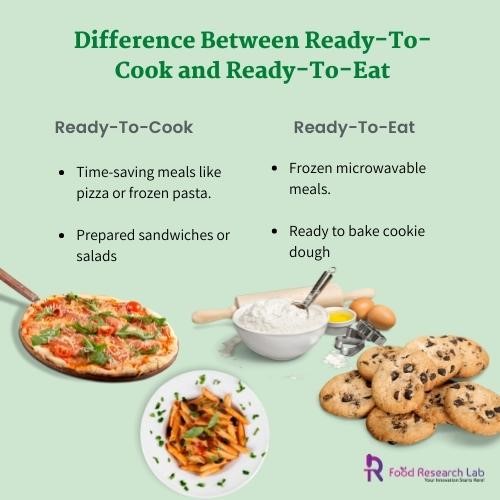
RTE and RTC Food Products
Food that is ready to eat does not need to be prepared or warmed before serving. Salads, prepared meats, smoked fish, sweets, sandwiches, cheese, and meals made ahead of time to serve cold are all examples.
They include all components but need some preparation or cooking via a procedure outlined on the packaging. Failure to follow the preparation and cooking guidelines may result in bacterial contamination, which can cause foodborne disease.
Consumers nowadays are altering the way they consume frozen meals by believing that some things are ready to eat. In recent years, food and beverage development has led frozen foods to grow in popularity, with more consumers flocking to the frozen food aisle for time-saving meals like pizza or frozen pasta and fast-frozen goods to enhance meals and snacks.
Frozen fruit and vegetables are also popular among health-conscious consumers when making smoothies or meals. However, in some of these instances, customers disregard the cooking directions on the box for their convenience.
Risks associated with misconceptions
Ready-to-cook Vegetables were never designed to be utilised in their frozen condition, yet some customers believe they are. This change in customer behaviour has triggered the industry to respond by modifying everything from processing equipment to package labels to keep the public safe from foodborne disease.
Ready-to-eat meals are precisely that: ready to eat, with no preparation, heating, or cooking required. Deli meats, cheese, readymade sandwiches, and salads are just a few examples. Foods produced to be heated/cooked to a specified internal core temperature by microwave, oven, or stovetop, such as frozen pizza, most frozen veggies, frozen microwavable meals, or ready-to-bake cookie dough, are examples of ready-to-cook foods. According to CMP, these temperatures and cooking instructions are indicated on the product packaging for consumer convenience but are frequently ignored.






